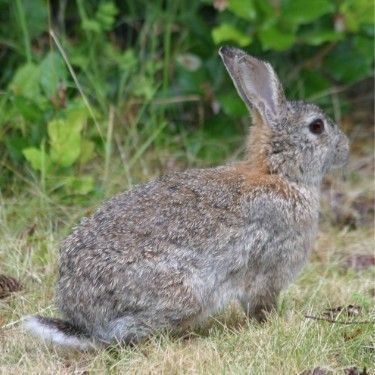Genus Sylvilagus Higher classification Cottontail rabbit | Phylum Chordata Scientific name Sylvilagus dicei Rank Species | |
 | ||
Similar Omilteme cottontail, Tres Marias rabbit, San José brush rabbit, Venezuelan lowland rabbit, Manzano mountain cottontail | ||
Dice's cottontail (Sylvilagus dicei) is a species of cottontail rabbit in the family Leporidae. It is found in Costa Rica and Panama, in páramo and cloud forest habitats.
Contents
Taxonomy
Dice's cottontail was first described by William P. Harris, Jr., in 1932. It was at one time thought to be a subspecies of the tapeti or forest cottontail (Sylvilagus brasiliensis) but is now recognised as a separate species. The type locality is El Copey de Dota, in the Cordillera de Talamanca, Costa Rica, at 6,000 feet (1,800 m).
Description
Dice's cottontail is one of the larger cottontail rabbits. Its back is dappled black and brown and its flanks greyish-black. The blackish tail is tiny and the underparts are dull white. It has a brown patch on its throat.
Distribution and habitat
Dice's cottontail is endemic to the Cordillera de Talamanca which straddles the border between Panama and Costa Rica. Its habitat is Alpine meadows and Páramo grasslands above the tree line. It also occurs in the oak-dominated cloud forests and high elevation shrublands at an altitude of up to 3,800 metres (12,500 ft) in Cerro Chirripó.
Status
The IUCN lists Dice's cottontail in its Red Book of Endangered Species as "Data Deficient" as the species has been little studied and its population trend is unknown, but in 1996, it was listed as "Endangered". The IUCN has identified a number of threats that it may face. Coyotes have become established in the area and may prey on it, and other predators may also be on the increase. Degradation of the forest land is taking place as trees are cut down and the land turned to pasture. Fire is also a concern because the local inhabitants regularly burn the land for range control and this may result in loss of grass for forage and loss of suitable vegetation cover in which the cottontail can lie up by day. These factors are causing the animal's range to contract upward into the mountains; this area is a national park, which should provide some protection to the species.
